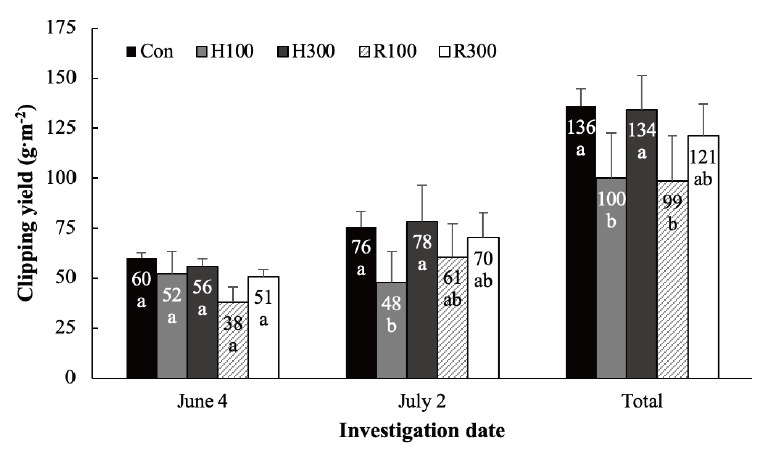Abstract
This study was conducted to investigate influences of various trinexapac-ethyl (TE) application on growth inhibition and visual quality in Kentucky bluegrass (
Figures & Tables

Fig. 1. Clipping yield of Kentucky bluegrass in pot after application trinexapac-ethyl (TE). Treatments were as follows; Con (Non-treatment of TE), H100 (0.005 a.i. g m; 5,000 fold dilution), H300 (0.005 a.i. g m; 15,000 fold dilution), R100 (0.01 a.i. g m; 2,500 fold dilution), R300 (0.01 a.i. g m; 7,500 fold dilution). Application of TE was carried out on May 8 and June 4 in 2019. a-d: Means with the same letters within column are not significantly different by Duncan's multiple range test at P≤0.05 level.


